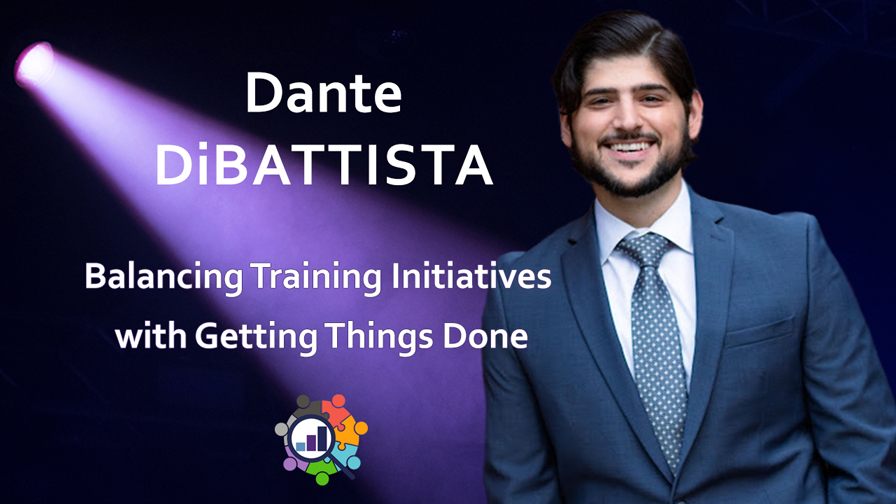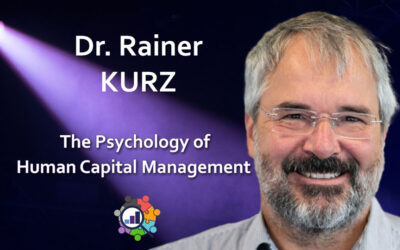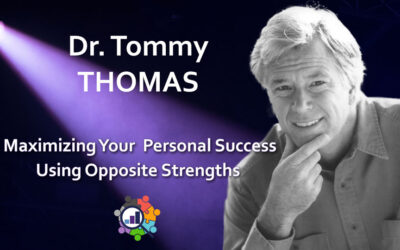A CykoMetrix Spotlight Production
Every week, the Spotlight shines on an amazing professional with a story to tell and lessons to teach. Welcome to the CykoMetrix Spotlight.
The following is an adapted transcript of the exchange between Sylvain Rochon, CMO at CykoMetrix as host, and Dante DiBattista, Transformational Leadership Speaker and Coach. www.linkedin.com/in/dante-dibattista-msol-shrm-cp-50bb8711b
Sylvain Rochon: Welcome to CykoMetrix Spotlight. My name is Sylvain Rochon. I’m the Chief Marketing Officer at CykoMetrix, a leading edge company in psychometrics and human data analytics that brings the employee assessment industry to the cloud with instant assessments, in-depth analyses, trait measurements, and team-based reporting features that simplify informed decision-making around recruiting, training, and managing today’s modern workplace.
In this installment of the CykoMetrix Spotlight, I am with a Dante DiBattista. He is a transformational leadership speaker and coach. He’s an award-winning one, in fact, who has worked with clients, ranging from start-ups to Fortune 500 companies. He has worked alongside some of the best and brightest for over seven years, including leadership coaches from Google, psychology researchers from Stanford, and other thought leaders in the area of human learning and development to generate powerful insights into the art and the science of leading others.
So close to my heart, man, Dante nice to see you here.
Dante DiBattista: It’s a pleasure. Thank you for having me.
Sylvain: All right. We’re both personalities in some way. We were talking that you have a podcast. I’ve been doing some recordings for different reasons over the years. We are public speakers, and what we wanted to talk about today is really interesting, I think, for both of us. It’s about getting things done, specifically by balancing training initiatives. The assumption to me is that you’re talking about the work inside organizations. What does that mean to you to get things done in this context?
Dante: Yeah, absolutely. I know one problem I always run into when I talk to people in the Training Department or in HR Departments in companies globally. They always run into this issue that some people outside these departments think we train just to train, and they could question how do they navigate these conversations where there are people questioning what they’re doing and the value of what they’re doing? Oftentimes, people don’t see the value of training until it’s not there and people are making mistakes, so it’s almost like the heart grows fonder with absence, right? For me, the reason I thought this was a great conversation for us is that, how do we help coach these leaders, these people leaders and HR people, in operations, in navigating these conversations, and how do you balance training initiatives, pushing these initiatives, making these initiatives happen while also not interrupting operations, or at least having the conversation that if you have to interrupt operations, you can navigate in a way that those operational leaders can see the value of it?
Sylvain: How can one be effectively deploying training without disrupting operations? Because inherently, they always seem to be disruptive.
Dante: Yeah, absolutely. There’s a couple of different ways you can go about it. I know for our organization and the organizations I’ve worked with in the past, learning management systems are really effective tools where people can learn at their own pace, at their own time, within their own schedule, allowing that flexible learning opportunity. I think learning management systems are incredibly powerful tools for that, and I think a lot of organizations have learning management systems in some capacity and may not use them to their fullest ability. We’re not investing the time and energy into building them out the way we could, so I think that’s a great conversation for us to have with folks in that area.
The other thing I would say is instead of looking at the conversation of how do you not disrupt operations, [we should ask] how do you quantify the value of time missed, and how do you create the value proposition that this is worth more than the value I’m asking you to lose? Does that make sense?
Sylvain: Yeah. It’s about balancing. What are you getting out of the training may be increases in productivity, right? It is the piece about getting things done and the time spent in the training proper or actively engaged in it, right? Is that correct?
Dante: Absolutely.
Sylvain: Okay. The implication here is that the training must have a direct, measurable value. Otherwise, why do it in the first place, because you’re “wasting time” in doing something that must have some kind of measured value. How do you measure that?
Dante: Well, it all depends on the goal of the training, but for me, one thing that we do is we go through and say, “Okay. How much time is this going to cost? How much do we pay the employees who are doing this? How much money are we paying these employees to go through this training?”, so then, we know the cost. We can sit here and say, “First and foremost, I want to acknowledge I know that asking us to do this training is going to cost this.” I think going through the process of saying, “Hey, I recognize the cost,” creates this kind of trust. People who are on that side of things will say, “Okay. They’re acknowledging that they know what they’re asking for,” and then you come in and say, “Even though I know it costs this much, I think this would be worth more because we expect that this training will increase productivity by this amount of this percentage.” We see, maybe, an error percentage in a certain process. If we eliminate that, we want to go back and double do it. We spent this many hours doing so. It costs this much money. By changing this process is this way and training it this way, we will decrease those errors, decrease the time we must go back, and redo this; and therefore, we’ll provide an additional value of whatever that dollar amount comes to, which far surpasses the dollar amount of the expense of providing the training in the first place.
Sylvain: Lots of math. On the other side, how do you measure whether or not the training itself is directly tied to an increase in some KPI and some kind of productivity measurement? How can you be sure that whatever the training was given is tied to something of value to the executives?
Dante: It’s a great question. A lot of times, it has to come from prior research. One thing that I tend to do is — I’ve noticed that other organizations have done this — other research from other companies have published research that shows this, so you come with some prior knowledge and then you come with a prediction or a hypothesis. “Based on this research I’ve done, I anticipate this will happen,” and then you try it out. If the results match the hypothesis, there’s no reason to believe it comes from any external factor, unless there were some other thing that’s been implemented at the same time and it’s hard to decipher which one is responsible for what, but I think it’s really important to understand all those variables and isolate the training as the one variable that is leading to these outcomes.
Sylvain: Yeah, it’s not laboratory conditions. No control of the variables.
Dante: But you can do control groups, right? If you have a large enough organization where you have multiple offices that are serving multiple populations, you could, in theory, say, “Hey, I’m not going to ask you to give us the whole price. Let’s do it in this one area, compare and contrast the outcomes, and see if we see those results. If this one area that we apply this training to outperforms the control group, then you should have no reason to doubt that we can’t replicate these results elsewhere.”
Sylvain: Makes sense. I’m a scientist. That makes complete sense with a control group and experiment, and then you can compare between the two. Now, at CykoMetrix, what we do, and we talk about this a lot because the platform allows people to see their soft skills clearly, or their personality, or whatever they’re trying to measure that is soft, you can do a benchmark prior to a training and then you can do another measurement after, which allows you to measure a delta before training and then after training. That is one way to also offer measurement if you’re using tools like that. Do you use psychometric assessments to try to either guide training or to do these pre and post-training measurements? How do you use them, if you use them at all?
Dante: Yeah, absolutely. We definitely use pre-assessments. I always ask for data first, and if we don’t have data we’re already tracking, then benchmarking is the first step. What I was alluding to earlier was if you already have data and you’re not happy with it, here is the next step you go into, but absolutely, I think benchmarking is essential. You have to know where you are, and you have to know where you want to go to draw a line between the two. I think that’s the most important thing for trainers.
Sylvain: Good. Can you give us, the audience some kind of an experience with a client, for example, without naming names, of course, of either a strong success of a delivery of training, like step-by-step, or perhaps even something on the opposite direction, like some kind of interesting failure that we could learn from?
Dante: Oh, wow. There is a large sample size to go with. I would say, in terms of success as it relates to training, one thing that I found really interesting for one of my experiences, I was consulting for a tech company, and they started to realize that they’ve grown so fast that they created almost factions within the organization. It wasn’t intentional and there wasn’t any animosity or anything like that, but these organizations, these different groups started working differently and it created different processes. It came to this point where they’re like, “We don’t know who’s doing what and how they’re doing it, and so it’s getting to a point where we’re seeing these inconsistent results. We can’t really pin down what’s causing what. Now, if we have four different sections of the organization doing things four different ways, we’re having four different problems to solve. If we just had a structured process and we created this uniform way of doing things, the standard operating procedure, then we can at least identify problems one at a time and see these larger results.” With that organization, one thing that we had to do was get the group together. If we picked one that worked best, three people would have to change, but the fact of the matter is each strategy had its own strengths. There’s a reason they did it, right? Each group had things they were doing well, so how do you get those all four groups to say, “We all have to change in our own unique ways,” and really guide four different change management processes?
It was a lot of work, but what we did was we got all four groups together and just, “Explain to us what you’re doing, how you’re doing it, why you’re doing it that way, what are the pros and cons of all of those things,” and then we compared and saw, “Okay. Well, how could these things lead to different kinds of results and how can we segment the data to figure out which processes work best for what outcomes? Maybe we have multiple projects with multiple phases. Which strategy works best for which phase of the project?”, and then really dive in deep in the data that way, and then coming back with a data-driven person, “Hey, team, we have four different strategies we had to evaluate. When looking in the data, we noticed these things work well for this, these things work well for this. We’ve come up with this uniform idea, combining all four of your ideas, but it’s going to challenge all four of these groups to change. How do you feel about that?”
Of course, there’s pushback. There is, “Oh, we appreciate you took us into consideration, but we thought you overlooked this. We thought you overlooked that,” and then everyone starts arguing. It comes to the point where we had to say, “Okay. I’ll give you this challenge. Come up with ideas on your own that outperform this one, and improve it. If you can outperform the data that we’ve projected for this new strategy, this new process that would develop, then we’ll use your new idea,” and no one could do it. I’m not saying that wasn’t a big thing about me, but no one could do it. It came to the point like, “We gave you an opportunity. We showed that we believe in you, we gave you this faith. Now, let’s move forward with this.”
Going into the training partner, that sounds like a lot of process improvement rather than training, but I think that stage was so important because then, they bought into the training. They knew why they were doing it, they believed in it, they knew they had a chance to try things their own way and provide value on their own, so they were more bought into the training.
I think it turned into a huge success because of that beginning phase. Going back to what we said earlier, how do you balance getting things done with just training? First, making sure you have full-on buying. People must believe in what you’re doing, believe in the ideas, and they have to be invested in it, and you also have to get people involved in the planning process as much as you can to gain that investment, and then ultimately, deliver high quality training. That’s exactly what we did.
Sylvain: That’s great. Always listen to the people, right?
Dante: Yeah.
Sylvain: If they go about it backwards, nothing’s going to come out of it. It just doesn’t work. Do you have a story of a learning experience to share, as well?
Dante: Yeah. Earlier my days as a trainer, as a consultant, I always wanted to approach things a certain way because I knew it worked for me. One of my hardest leadership lessons was trying to teach you to do things your way isn’t going to work because it worked for you, and you are a unique individual, right? We always want to tell people do things our way because we know that way works because it worked for us, but your job is not to teach people how to do it your way. It’s to help them identify what their way looks like within the framework of what needs to be done, when it needs to be done. I think that sensitive balance of training to people’s strengths and needs and doing it in the way that we know is the right way and best practice is.
I have quite a few examples of that really blowing up in my face, when I tried doing things my way, I thought this was the best idea, we evaluated the numbers, but the people part, I missed the ball in terms of talking to people where they are versus where I want them to be.
Sylvain: I’ve experienced that mistake as well. I learned that, too. I think it’s a very common thing to think when you are young and becoming a professional. We learn out of University or whoever, “This is the way to do things,” and we have our own ideas, right? We learned that valuable lesson that others are also not idiots and they also have their own perception, their own way of doing things that may be different than ours, but works for them. That’s the adaptation, I think. Many professionals go through that mistake. I certainly did. We become better consultants and better professionals by learning that.
In your method, I think you’re empowering the people you interact with to figure out what works for them and guiding them to find that, versus dictating what works and what does not. I think that’s very valuable.
The people that are watching this or are reading this verbatim, I would recommend Dante for transformational leadership and coaching because this is a person that’s learned from mistakes and can help you be the better you. You can find how to contact Dante via a link down below in the end of the description, and go to his LinkedIn and you can interact with him and have him and his colleagues help you guys out.
Thanks a bunch, Dante, for sharing.
Dante: Yeah, absolutely. I appreciate the opportunity. I appreciate everyone for listening. Thank you for your time. I hope I delivered the value you were looking for when you clicked on this link and you listened to this episode.
Sylvain: All right. Thanks so much.
About Dante DiBattista – www.linkedin.com/in/dante-dibattista-msol-shrm-cp-50bb8711b
Dante is an award-winning leadership coach and inspirational speaker who has worked with clients ranging from startups to Fortune 500 companies. Leveraging his masters in organizational leadership, the findings from his own research, and over 7 years experience as a leadership and organizational development consultant, Dante delivers transformational results for his clients. He has worked alongside some of the best and brightest including leadership coaches from Google, psychology researchers from Stanford, and other thought-leaders in the area of human learning & development to generate powerful insights into the art and the science of leading others.
About CykoMetrix – www.CykoMetrix.com
CykoMetrix is a leading edge combinatorial psychometric and human data analytics company that brings the employee assessment industry to the cloud, with instant assessments, in-depth analysis, trait measurements, and team-based reporting features that simplify informed decision-making around recruiting, training, and managing today’s modern workplace.



